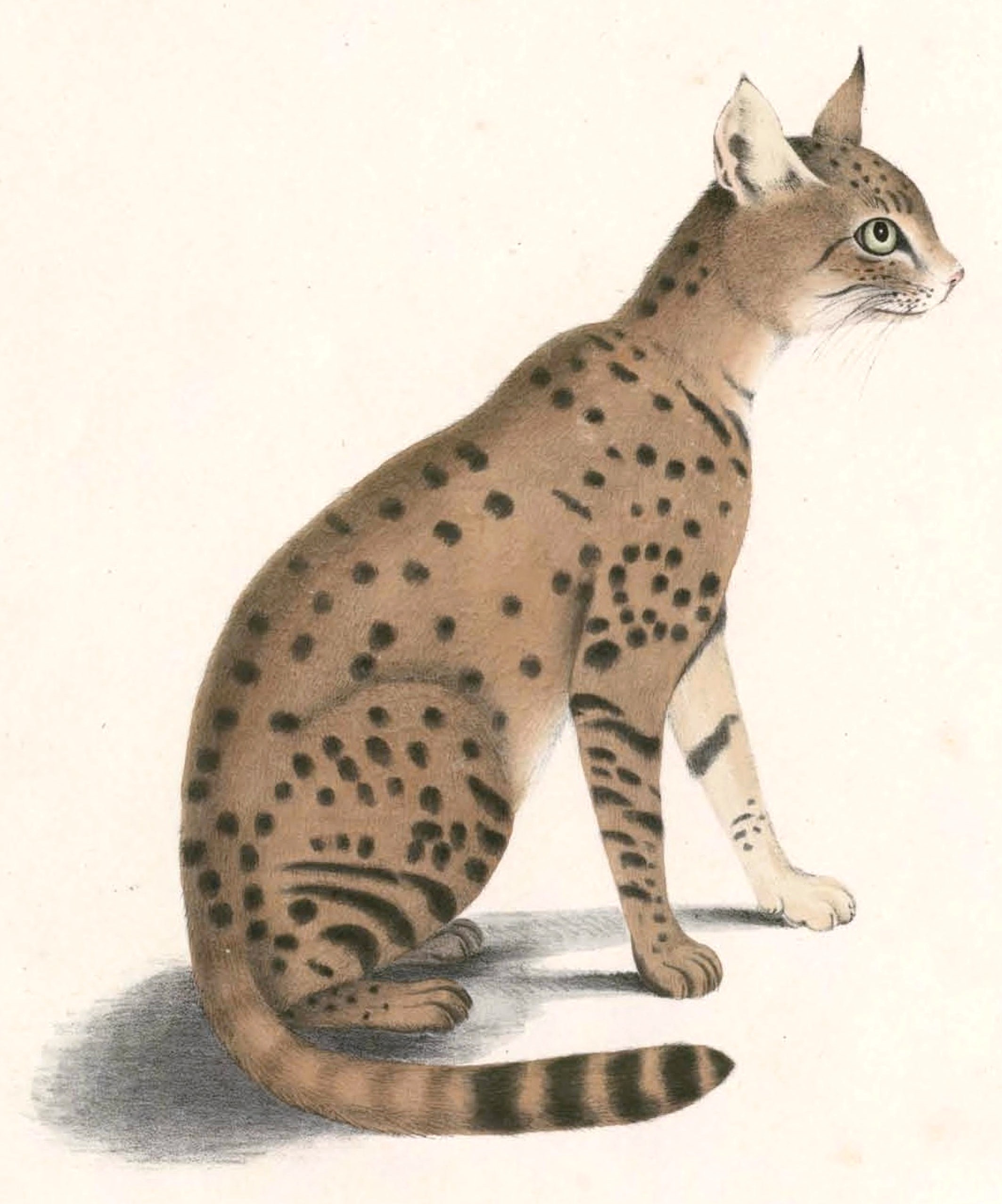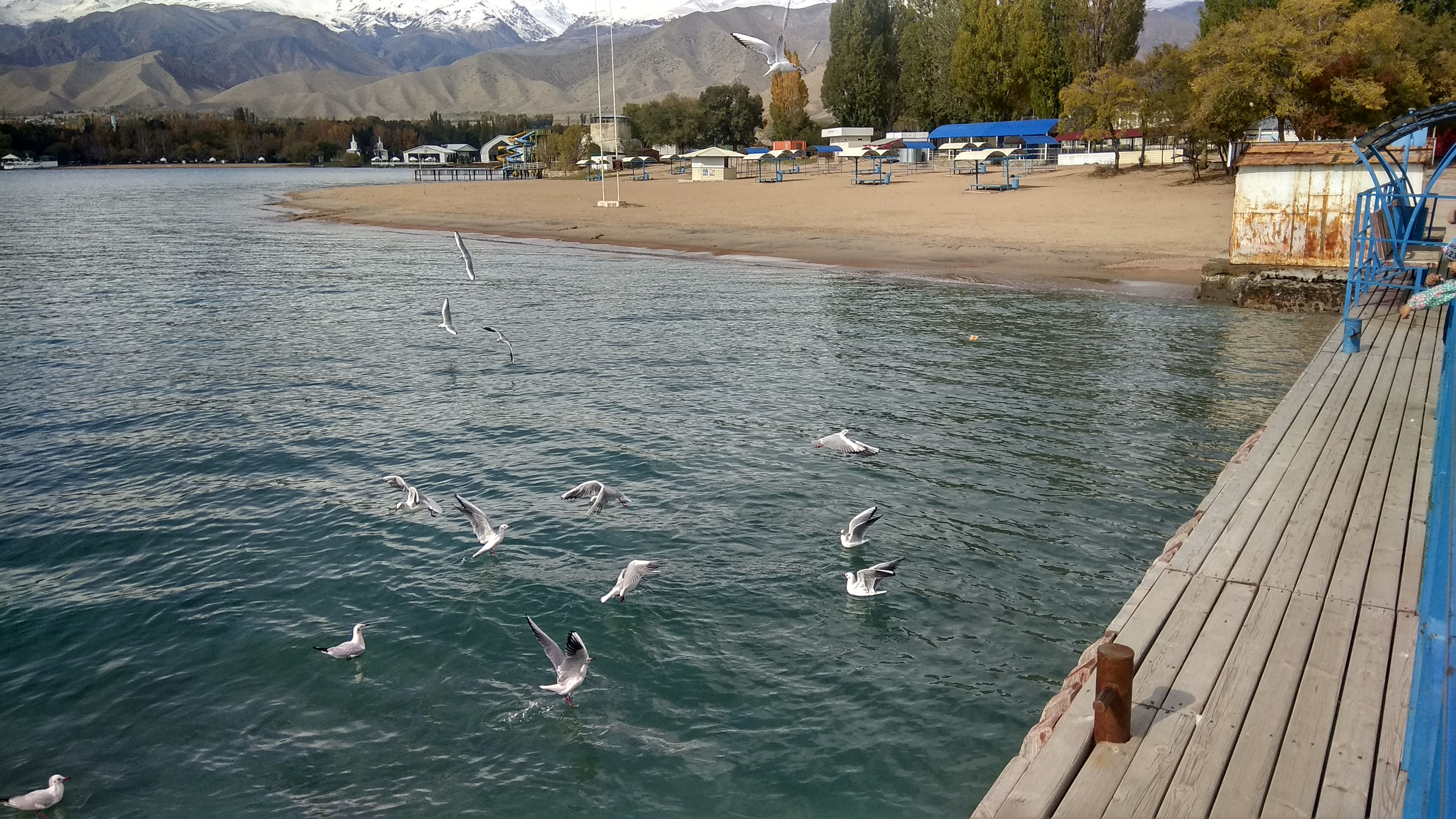|
Asiatic Wildcat
The Asiatic wildcat (''Felis lybica ornata''), also known as the Indian desert cat, is an African wildcat subspecies that occurs from the eastern Caspian Sea north to Kazakhstan, into western India, western China and southern Mongolia. There is no information on current status or population numbers across the Asiatic wildcat's range as a whole, but populations are thought to be declining. Taxonomy ''Felis ornata'' was the scientific name used by John Edward Gray in the early 1830s as a caption to an illustration of an Indian wildcat from Thomas Hardwicke's collection. In subsequent years, several naturalists described spotted wildcat zoological specimens from Asian range countries and proposed names, including the following: *''Chaus caudatus'' by Gray in 1874 was a skin and skull from the Bukhara Region in Uzbekistan. *''Felis shawiana'' by William Thomas Blanford in 1876 was a pale wildcat skin from Yarkand in Xinjiang, western China. *''Felis (Felis) kozlovi'' by Konstan ... [...More Info...] [...Related Items...] OR: [Wikipedia] [Google] [Baidu] |
John Edward Gray
John Edward Gray (12 February 1800 – 7 March 1875) was a British zoologist. He was the elder brother of zoologist George Robert Gray and son of the pharmacologist and botanist Samuel Frederick Gray (1766–1828). The same is used for a zoological name. Gray was keeper of zoology at the British Museum in London from 1840 until Christmas 1874, before the natural history holdings were split off to the Natural History Museum. He published several catalogues of the museum collections that included comprehensive discussions of animal groups and descriptions of new species. He improved the zoological collections to make them amongst the best in the world. Biography Gray was born in Walsall, but his family soon moved to London, where Gray studied medicine. He assisted his father in writing ''The Natural Arrangement of British Plants'' (1821). After being blackballed by the Linnean Society of London, Gray shifted his interest from botany to zoology. He began his zoological ... [...More Info...] [...Related Items...] OR: [Wikipedia] [Google] [Baidu] |
Konstantin Satunin
Konstantin Alekseevich Satunin (20 May 1863–10 November 1915) was a Russian zoologist who graduated at Moscow State University in 1890. From 1893 onward, he worked at a sericulture station in the Caucasus. He was a senior specialist at the Department of Agriculture between 1907 and 1915, concentrating on applied zoology and hunting in the Caucasus. He studied the mammals of Russia and Central Asia and published many works on the fauna of the Caucasus, mainly in the field of mammalogy but also entomology, herpetology, ichthyology, ornithology, sericulture, zoogeography, game management science and fishing. For example, he gave descriptions of a Caspian tiger from Prishibinskoye.Geptner, V. G., Sludskij, A. A. (1972). ''Mlekopitajuščie Sovetskogo Soiuza.'' Vysšaia Škola, Moskva. (In Russian; English translation: Heptner, V.G., Sludskii, A. A., Komarov, A., Komorov, N.; Hoffmann, R. S. (1992)''Mammals of the Soviet Union. Vol III: Carnivores (Feloidea).''Smithsonian Institutio ... [...More Info...] [...Related Items...] OR: [Wikipedia] [Google] [Baidu] |
Central Asia
Central Asia is a region of Asia consisting of Kazakhstan, Kyrgyzstan, Tajikistan, Turkmenistan, and Uzbekistan. The countries as a group are also colloquially referred to as the "-stans" as all have names ending with the Persian language, Persian suffix "-stan" (meaning ) in both respective native languages and most other languages. The region is bounded by the Caspian Sea to the southwest, European Russia to the northwest, China and Mongolia to the east, Afghanistan and Iran to the south, and Siberia to the north. Together, the five Central Asian countries have a total population of around million. In the pre-Islamic and early Islamic eras ( and earlier) Central Asia was inhabited predominantly by Iranian peoples, populated by Eastern Iranian-speaking Bactrians, Sogdians, Khwarezmian language, Chorasmians, and the semi-nomadic Scythians and Dahae. As the result of Turkic migration, Central Asia also became the homeland for the Kazakhs, Kyrgyzs, Volga Tatars, Tatars, Turkmens, ... [...More Info...] [...Related Items...] OR: [Wikipedia] [Google] [Baidu] |
Pakistan
Pakistan, officially the Islamic Republic of Pakistan, is a country in South Asia. It is the List of countries and dependencies by population, fifth-most populous country, with a population of over 241.5 million, having the Islam by country#Countries, second-largest Muslim population as of 2023. Islamabad is the nation's capital, while Karachi is List of cities in Pakistan by population, its largest city and financial centre. Pakistan is the List of countries and dependencies by area, 33rd-largest country by area. Bounded by the Arabian Sea on the south, the Gulf of Oman on the southwest, and the Sir Creek on the southeast, it shares land borders with India to the east; Afghanistan to the west; Iran to the southwest; and China to the northeast. It shares a maritime border with Oman in the Gulf of Oman, and is separated from Tajikistan in the northwest by Afghanistan's narrow Wakhan Corridor. Pakistan is the site of History of Pakistan, several ancient cultures, including the ... [...More Info...] [...Related Items...] OR: [Wikipedia] [Google] [Baidu] |
Asian Wildcat (Felis Lybica Ssp
{{disambiguation ...
Asian may refer to: * Items from or related to the continent of Asia: ** Asian people, people in or descending from Asia ** Asian culture, the culture of the people from Asia ** Asian cuisine, food based on the style of food of the people from Asia ** Asian (cat), a cat breed similar to the Burmese but in a range of different coat colors and patterns * Asii (also Asiani), a historic Central Asian ethnic group mentioned in Roman-era writings * Asian option, a type of option contract in finance * Asyan, a village in Iran See also * * * East Asia * South Asia * Southeast Asia * Asiatic (other) Asiatic refers to something related to Asia. Asiatic may also refer to: * Asiatic style, a term in ancient stylistic criticism associated with Greek writers of Asia Minor * In the context of Ancient Egypt, beyond the borders of Egypt and the cont ... [...More Info...] [...Related Items...] OR: [Wikipedia] [Google] [Baidu] |
Natural History Museum, London
The Natural History Museum in London is a museum that exhibits a vast range of specimens from various segments of natural history. It is one of three major museums on Exhibition Road in South Kensington, the others being the Science Museum (London), Science Museum and the Victoria and Albert Museum. The Natural History Museum's main frontage, however, is on Cromwell Road. The museum is home to life and earth science specimens comprising some 80 million items within five main collections: botany, entomology, mineralogy, palaeontology and zoology. The museum is a centre of research specialising in Taxonomy (biology), taxonomy, identification and conservation. Given the age of the institution, many of the collections have great historical as well as scientific value, such as specimens collected by Charles Darwin. The museum is particularly famous for its exhibition of dinosaur skeletons and ornate architecture—sometimes dubbed a ''cathedral of nature''—both exemplified by the ... [...More Info...] [...Related Items...] OR: [Wikipedia] [Google] [Baidu] |
Reginald Innes Pocock
Reginald Innes Pocock, (4 March 1863 – 9 August 1947) was a British zoologist. Pocock was born in Clifton, Bristol, the fourth son of Rev. Nicholas Pocock and Edith Prichard. He began showing interest in natural history at St. Edward's School, Oxford. He received tutoring in zoology from Sir Edward Poulton, and was allowed to explore comparative anatomy at the Oxford Museum. He studied biology and geology at University College, Bristol, under Conwy Lloyd Morgan and William Johnson Sollas. In 1885, he became an assistant at the Natural History Museum, and worked in the section of entomology for a year. He was put in charge of the collections of Arachnida and Myriapoda. He was also given the task to arrange the British birds collections, in the course of which he developed a lasting interest in ornithology. The 200 papers he published in his 18 years at the museum soon brought him recognition as an authority on Arachnida and Myriapoda; he described between 300 a ... [...More Info...] [...Related Items...] OR: [Wikipedia] [Google] [Baidu] |
Kyrgyzstan
Kyrgyzstan, officially the Kyrgyz Republic, is a landlocked country in Central Asia lying in the Tian Shan and Pamir Mountains, Pamir mountain ranges. Bishkek is the Capital city, capital and List of cities in Kyrgyzstan, largest city. Kyrgyzstan is bordered by Kazakhstan to the Kazakhstan–Kyrgyzstan border, north, Uzbekistan to the Kyrgyzstan–Uzbekistan border, west, Tajikistan to the Kyrgyzstan–Tajikistan border, south, and China to the China–Kyrgyzstan border, east and southeast. Ethnic Kyrgyz people, Kyrgyz make up the majority of the country's over 7 million people, followed by significant minorities of Uzbeks and Russians. Kyrgyzstan's history spans a variety of cultures and empires. Although geographically isolated by its highly mountainous terrain, Kyrgyzstan has been at the crossroads of several great civilizations as part of the Silk Road along with other commercial routes. Inhabited by a succession of tribes and clans, Kyrgyzstan has periodically fallen unde ... [...More Info...] [...Related Items...] OR: [Wikipedia] [Google] [Baidu] |
Issyk-Kul
Issyk-Kul () or Ysyk-Köl (, ; ) is an endorheic saline lake in the western Tianshan Mountains in eastern Kyrgyzstan, just south of a dividing range separating Kyrgyzstan from Kazakhstan. It is the eighth-deepest lake in the world, the eleventh-largest lake in the world by volume (though not in surface area), the deepest lake whose deepest point is above sea level (939 meters or 3,080 feet), and the third-largest saline lake. Although it is located at a lofty elevation of and subject to severe cold during winter, it rarely freezes over due to high salinity, hence its name, which in the Kyrgyz language means "warm lake". The lake is a Ramsar site of globally significant biodiversity and forms part of the Issyk-Kul Biosphere Reserve. Geography Issyk-Kul Lake is long, up to wide and its surface area is . It is the second-largest mountain lake in the world behind Lake Titicaca in South America. It is at an altitude of and reaches in depth. About 118 rivers and streams f ... [...More Info...] [...Related Items...] OR: [Wikipedia] [Google] [Baidu] |
Sergey Ognev
Sergey Ivanovich Ognev () (17 November 1886 in Moscow – 20 December 1951 in Moscow) was a scientist, zoologist and naturalist, remembered for his work on mammalogy. He graduated from Moscow University in 1910, the same year in which he published his first monograph. In 1928, he became a professor at the Moscow State Pedagogical University. He published a variety of textbooks in zoology and ecology. His masterpiece, magnum opus, ''Mammals of Russia and adjacent territories'', was never completed. He is remembered in the species names of three mammals: ''Talpa ognevi'', ''Cnephaeus ognevi'', and ''Plecotus ognevi'', and the common name of Myomimus personatus, Ognev's Mouse-tailed Dormouse. References 1886 births 1951 deaths 20th-century Russian zoologists Soviet zoologists Scientists from Moscow Academic staff of Moscow State University {{biologist-stub ... [...More Info...] [...Related Items...] OR: [Wikipedia] [Google] [Baidu] |
Lower Mesopotamia
Lower Mesopotamia is a historical region of Mesopotamia. It is located in the alluvial plain of Iraq from the Hamrin Mountains to the Faw Peninsula near the Persian Gulf. In the Middle Ages it was also known as the '' Sawad'' and al-Jazira al-sflia ("Lower Jazira"), which strictly speaking designated only the southern alluvial plain, and Arab Iraq, as opposed to Persian Iraq, the Jibal. Lower Mesopotamia was home to Sumer and Babylonia. Delimitation The medieval Arab geographers placed the northern border between Iraq and Upper Mesopotamia (the ''Jazirah'') in a line running from Anbar on the Euphrates to Tikrit on the Tigris, although later it was shifted to a line running due west from Tikrit, thus including several towns on the Euphrates past Anbar into Iraq. Geography An alluvial plain begins north of Tikrit Near Hamrin Mountains and extends to the Persian Gulf. Here the Tigris and Euphrates lie above the level of the plain in many places, and the whole area is a rive ... [...More Info...] [...Related Items...] OR: [Wikipedia] [Google] [Baidu] |




